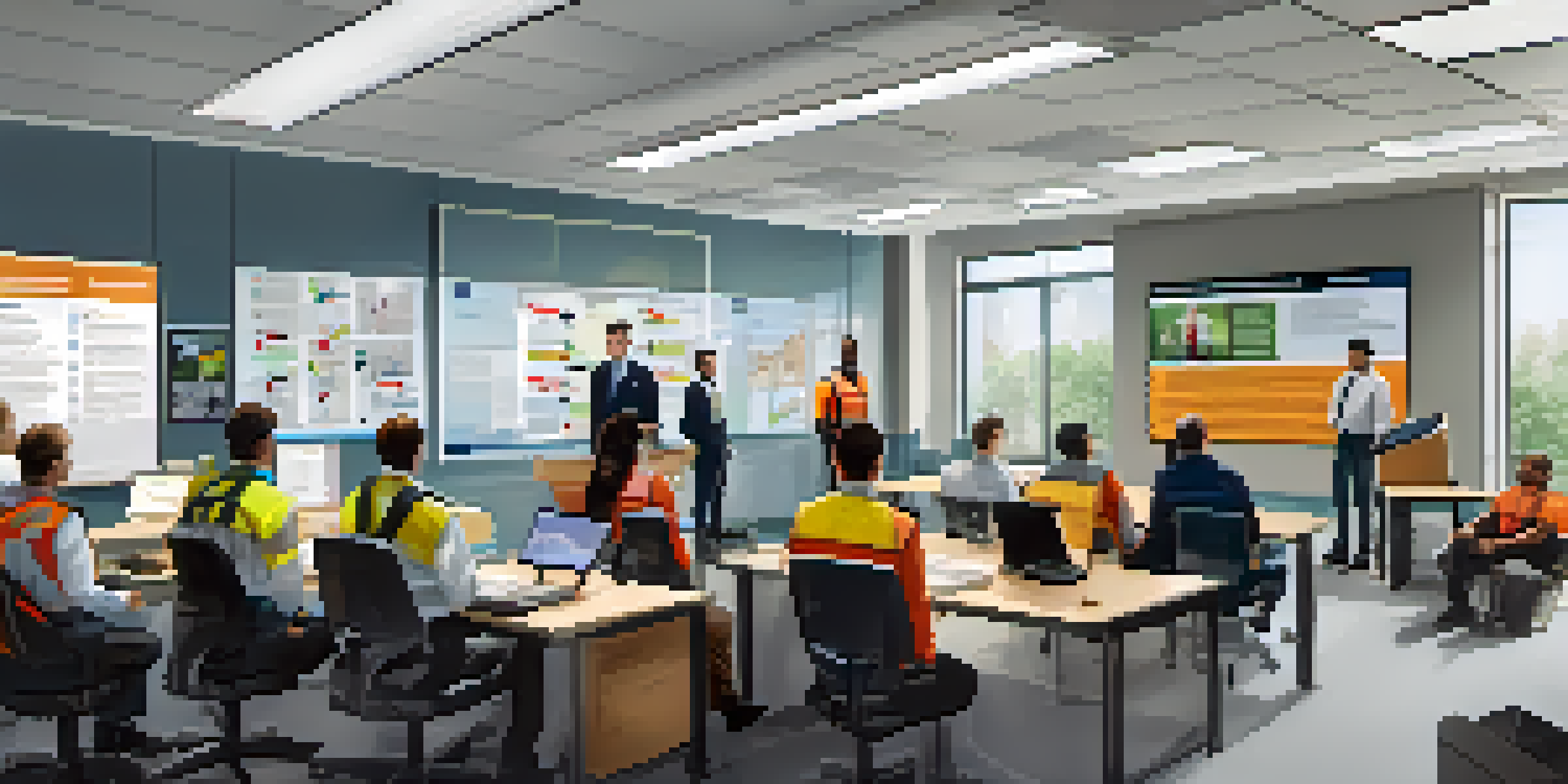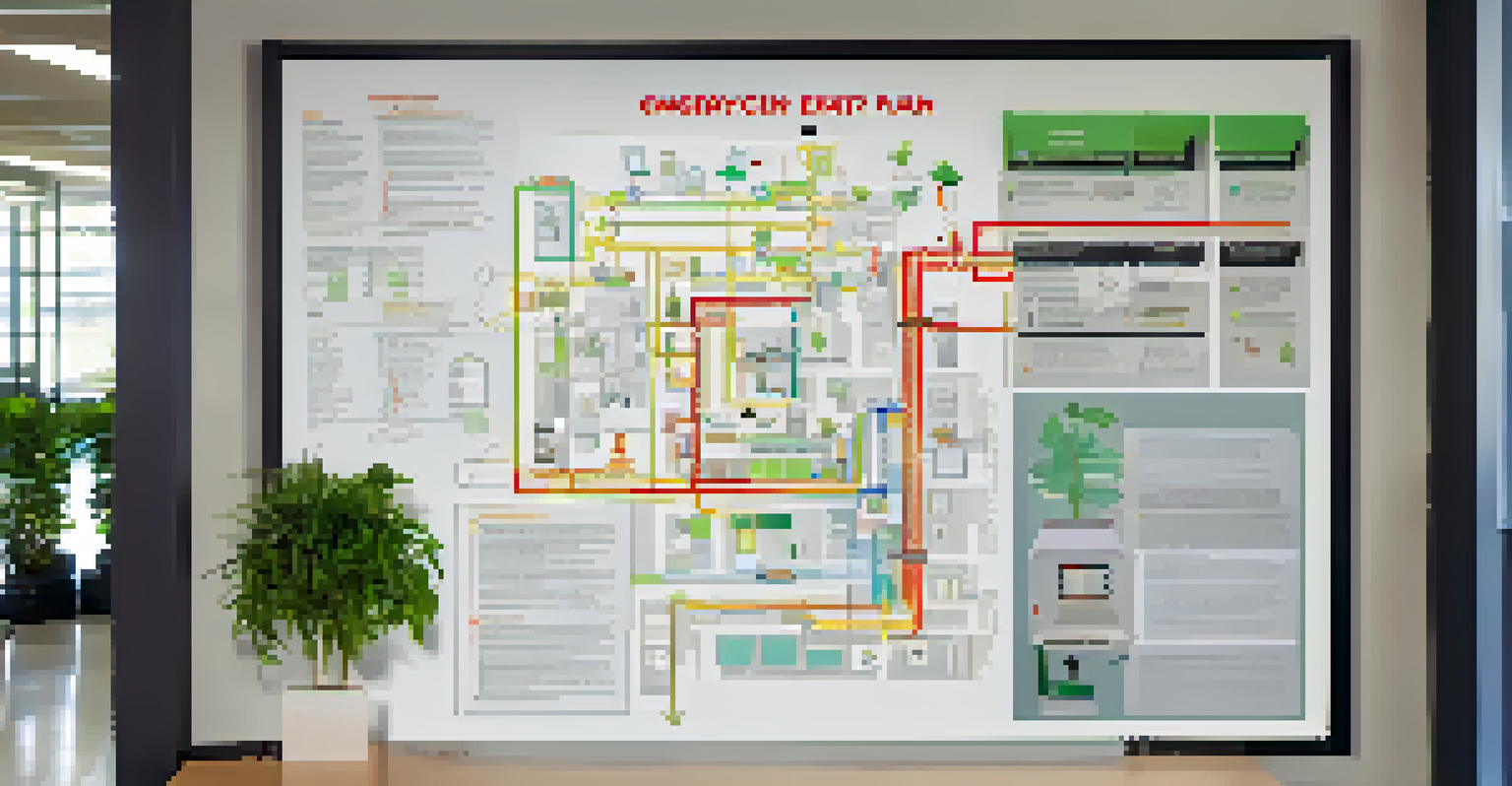Preparing Your Workplace for Active Shooter Incidents

Understanding the Importance of Preparedness
In today's world, the need for workplace safety has never been more critical. Active shooter incidents, though rare, can happen anywhere, making preparedness essential. Understanding the potential risks and having a plan in place can save lives and reduce panic during such events.
By failing to prepare, you are preparing to fail.
Being proactive rather than reactive means creating an environment where employees feel safe and valued. This not only enhances morale but also fosters a culture of awareness. When everyone knows what to do in an emergency, confusion and fear are minimized.
Ultimately, preparedness is about empowering your team. By educating them on safety protocols and encouraging open discussions, you create a supportive atmosphere that prioritizes everyone’s well-being. This approach helps demystify the fear surrounding active shooter situations.
Developing a Comprehensive Emergency Plan
The foundation of workplace safety lies in a well-structured emergency plan. This plan should clearly outline procedures for different scenarios, including active shooter incidents. Consider involving local law enforcement in developing and reviewing this plan to ensure it meets current safety standards.

A comprehensive emergency plan should include communication strategies, evacuation routes, and designated safe areas. Make sure this information is easily accessible to all employees, perhaps through an online portal or physical handouts. Regular drills can also help reinforce these procedures.
Importance of Preparedness
Creating a culture of preparedness empowers employees and minimizes panic during emergencies.
Moreover, it's vital to tailor the plan to your specific workplace environment. Different layouts and employee dynamics can affect how an incident unfolds. By customizing your emergency plan, you prepare your team to respond effectively, no matter the situation.
Training Employees on Safety Protocols
Training is a crucial component of workplace preparedness. Employees should be well-versed in the emergency plan and know exactly what to do if an active shooter incident occurs. Regular training sessions can help ensure that everyone understands their roles and responsibilities during a crisis.
An ounce of prevention is worth a pound of cure.
Consider incorporating scenario-based drills that simulate real-life situations. These exercises not only boost confidence but also allow employees to practice their responses in a controlled environment. Feedback should be encouraged to continuously improve the training process.
Additionally, providing resources, such as instructional videos or manuals, can reinforce the training. This way, employees can review key information at their own pace, ensuring they feel equipped to handle emergencies. Knowledge and preparedness can greatly enhance their sense of security.
Creating a Culture of Awareness and Communication
A safe workplace is built on a culture of awareness where employees feel empowered to speak up. Encourage open communication about safety concerns, whether it’s reporting suspicious activity or discussing personal feelings about workplace safety. This culture can foster a sense of community and vigilance.
Regular meetings can serve as platforms for discussing safety updates and sharing experiences. These gatherings can help normalize the conversation around workplace safety, making it less intimidating for employees. When safety becomes part of the daily dialogue, it’s top of mind for everyone.
Comprehensive Emergency Plans
A well-structured emergency plan tailored to your workplace is essential for effective response in crises.
Moreover, consider appointing safety champions within your organization. These individuals can help facilitate discussions and keep safety protocols at the forefront. By involving employees in the safety process, you create a more engaged and aware workforce.
Establishing Clear Communication Channels
In times of crisis, effective communication can make all the difference. Establish clear channels for disseminating information quickly, such as text alerts, emails, or a dedicated app. Ensure every employee knows how to access these channels and what to expect during an emergency.
It's also essential to have a designated spokesperson to relay information during an incident. This individual should be trained to provide accurate updates and minimize misinformation. Having a single point of contact helps streamline communication and reduces panic among employees.
Regularly test these communication channels to ensure they work effectively in emergencies. Drills can help identify any gaps or issues, allowing for adjustments before a real incident occurs. A well-informed workforce is better prepared to respond calmly and efficiently.
Securing Your Physical Environment
The physical environment plays a significant role in workplace safety. Conduct regular assessments to identify vulnerabilities, such as unsecured entrances or inadequate lighting. Making necessary improvements can enhance overall safety and deter potential threats.
Consider implementing security measures like access control systems, surveillance cameras, and alarm systems. These tools can provide an extra layer of protection and serve as a deterrent for potential intruders. Engaging with a security consultant can offer valuable insights tailored to your specific needs.
Engagement with Local Authorities
Building relationships with local law enforcement enhances safety strategies and improves crisis response.
It's also important to ensure that employees know how to use these safety features. Regular training on security protocols and equipment can empower staff to respond effectively in emergencies. When everyone is familiar with their surroundings, they’re more likely to act swiftly and safely.
Engaging Local Law Enforcement and Emergency Services
Building relationships with local law enforcement and emergency services can be invaluable in preparing for active shooter incidents. Invite officers to your workplace to discuss safety strategies and conduct training sessions. Their expertise can enhance your emergency plan and provide reassurance to employees.
Consider organizing joint drills with local police to simulate real-life scenarios. These exercises can help both your team and law enforcement understand how to coordinate effectively during a crisis. Such collaborative efforts can also foster trust and communication between your organization and emergency responders.

Additionally, keep lines of communication open with local authorities. Regularly update them on your emergency plans and any changes in your workplace environment. This proactive approach ensures that everyone is on the same page, ultimately improving response times should an incident occur.
Continuously Evaluating and Improving Safety Measures
Workplace safety is not a one-time effort but an ongoing process. Regularly evaluate your emergency plan and safety measures to ensure they remain effective and relevant. This includes staying informed about new safety protocols and adapting to changes in your workplace environment.
Gather feedback from employees after drills and actual incidents to identify areas for improvement. This input is crucial for refining your safety strategies and making them more effective. Engaging employees in this process fosters a sense of ownership over their safety.
Finally, keep training sessions fresh and relevant by incorporating new scenarios and updates. As workplace dynamics evolve, so should your safety measures. By continuously improving your preparedness efforts, you create a resilient organization ready to handle any challenge.